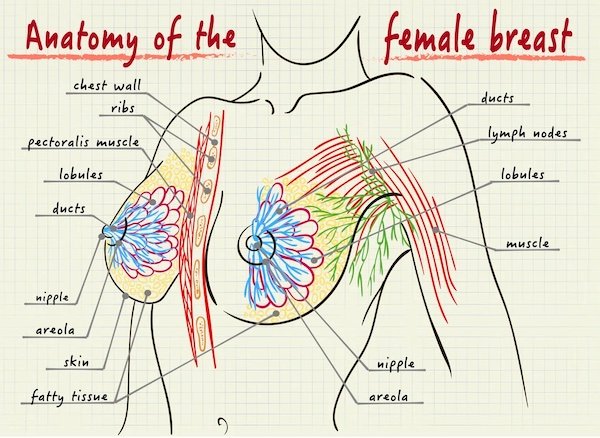What Exactly Are Boobs?
Have you ever paused to ponder the question, "What exactly are boobs made of?" Because we have. I mean what other thing in life is a topic of so much intrigue. It’s a source of sensuality, sexuality. They’re the source of life! Some women want them larger, others want them smaller. Some guys love them, other guys really love them (us). As simple as it may seem, this topic is both fascinating and sometimes downright silly. In this article, we'll explore how our understanding of the composition of breasts has evolved over time and what current scientific knowledge tells us about these captivating cushions. So let’s get into the question at hand: What are boobs???
The Building Blocks of Boobs
Breasts are a mesmerizing mix of various tissues, each playing a unique role in their form and function. At their core, boobs are primarily composed of fatty tissue, which gives them their soft, rounded shape. But there's more to breasts than just fat! They also contain mammary glands, responsible for producing milk, as well as fibrous tissue that provides support and structure.
Let's not forget the often overlooked yet essential component: the Cooper's ligaments, or suspensory ligaments. These thin bands of fibrous tissue help maintain the shape and position of the breasts by connecting the breast tissue to the chest wall. The size and shape of breasts can vary greatly depending on factors such as genetics, hormones, and even lifestyle choices.
A Journey Through Time
Throughout history, our understanding of the composition of breasts has evolved along with advancements in science and medicine. In ancient times, people believed that breasts were filled with milk at all times, waiting to nourish a hungry baby. It wasn't until the 17th century that scientists began to explore the true anatomy of the breast, discovering the presence of mammary glands and the fact that milk production is triggered by hormones during pregnancy and lactation.
In more recent times, researchers have gained a deeper understanding of the role that hormones and genetics play in determining breast size and shape. With the advent of modern imaging techniques, such as mammograms and ultrasounds, we can now take a closer look at the intricate structures that make up our beloved boobs.
The Science of Boobs
So, what does current scientific knowledge tell us about the composition of breasts? We now know that the amount of fatty tissue in breasts can vary greatly from person to person, resulting in a wide range of sizes and shapes. In addition, hormonal changes during puberty, pregnancy, and menopause can cause fluctuations in the size and firmness of breasts.
Breast density, a term used to describe the proportion of fatty tissue to fibrous and glandular tissue, also plays a significant role in breast health. Women with denser breasts may have a higher risk of developing breast cancer, making regular screening crucial for early detection and prevention.
Furthermore, while many people believe that breasts contain muscle, this is actually a misconception. The pectoral muscles, which lie beneath the breast tissue, play a role in supporting and moving the breasts, but they are not a part of the boobs themselves.
In Conclusion: Boobs Unveiled
Breasts are an enchanting combination of fat, fibrous tissue, and mammary glands, all working together to create the captivating curves that have captured our hearts and minds throughout history. Our understanding of boobs has come a long way over the years, and as science continues to uncover the mysteries of these bewitching body parts, we can't help but be entranced by the magic of boobs. So the next time you find yourself marveling at a magnificent pair, take a moment to appreciate the complex and captivating composition of these fabulous fleshy wonders!





